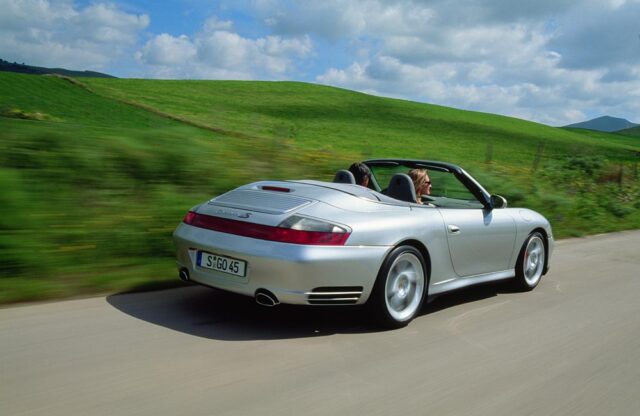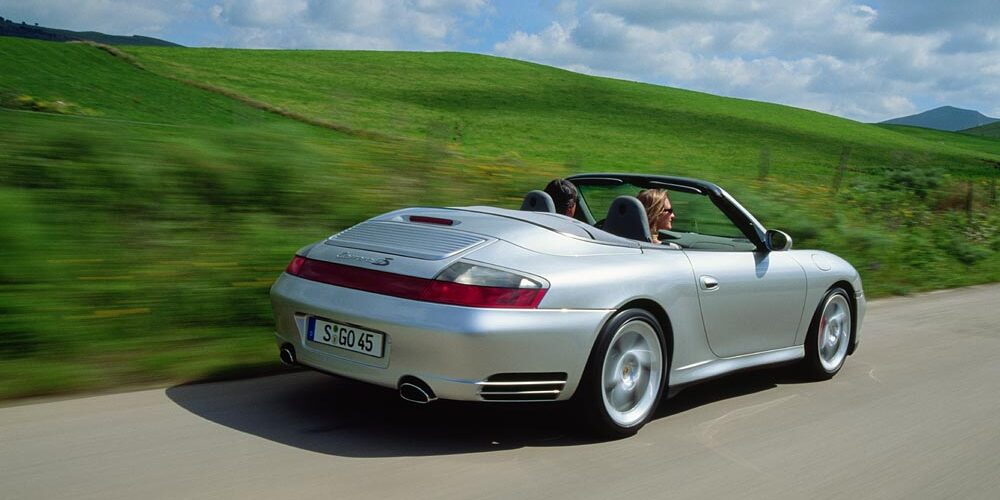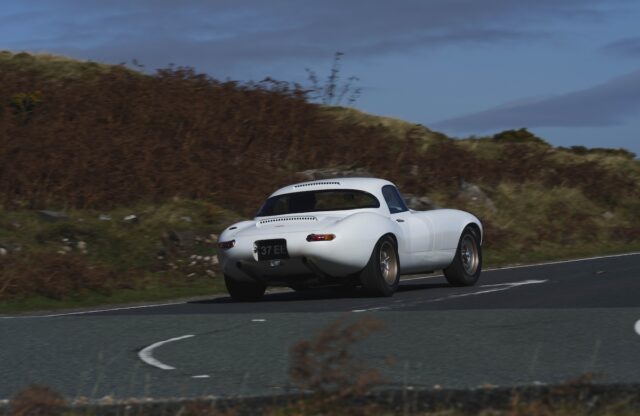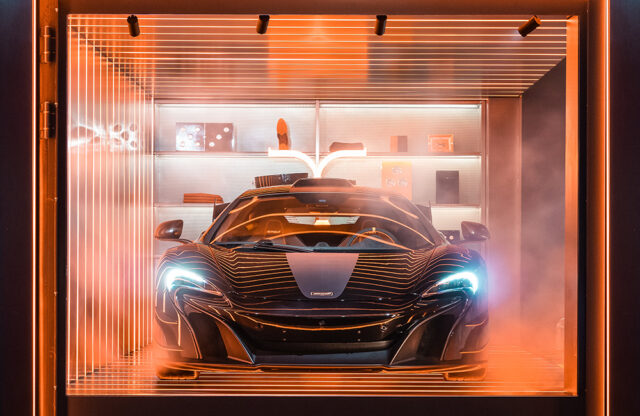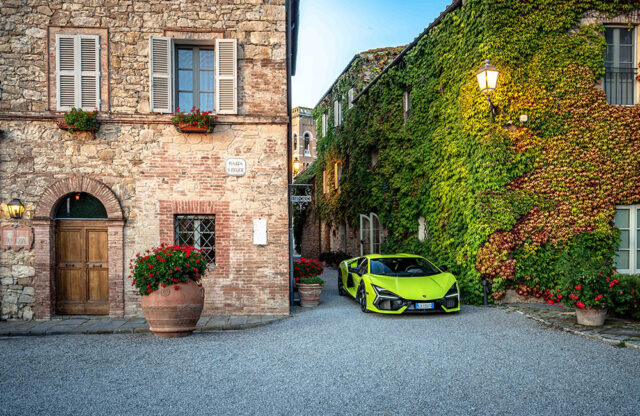In many respects, the 996 is the under-appreciated 911. The first water-cooled version of the iconic Porsche sports car had a lot in common with the Boxster, including its distinctive ‘fried egg’ headlamps with integrated indicators, its basic platform and much of its front suspension.
And while some 911 purists sniff at that, other fans of the marque recognise it for what it was. The 996 was Porsche finally bringing the 911 up to date, while maintaining a number of key elements of its essential DNA – namely the iconic coupé profile, the horizontally opposed six-cylinder engine in its rump, and the upmarket but accessible supercar image that the 911 had portrayed so exceptionally well since its inception. It was also a fabulous machine to drive, being arguably the finest-handling car of the 1990s providing you didn’t over-provoke it… At that point it would do another classically 911 thing and fly backwards into the weeds.
If anything, though, the 996 was the perfect compromise. It was rapid and entertaining just as a 911 should be, but it was also docile and easy to drive around town, especially when equipped with the Tiptronic semi-auto ’box – a 911 with the flexibility of a manual and thumb-shift gearchanges, but with just the two pedals, meaning that it was as happy lapping the M25 as it was lapping the Nürburgring. The 996 proved a hit with the wider motoring public, and worldwide sales figures of more than 175,000 made it one of Porsche’s most popular cars ever.
Those numbers mean there are now plenty available for tempting prices on the used market. Despite the 996’s healthy reliability record, however, not all of them are good buys. Choose one that has been properly maintained and you can look forward to years of enjoyable driving – but pick one that has been neglected, and you can expect some sizeable repair bills.
ENGINE AND GEARBOX
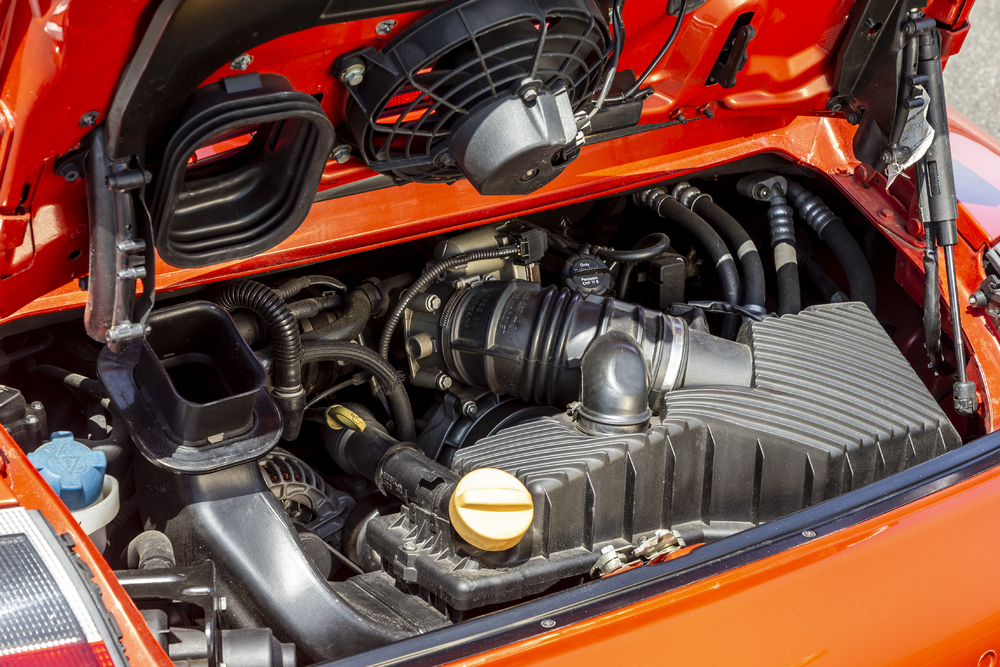
“The 996 may be a sports car, but it is also practical enough for everyday use, so there is no reason to worry about the mileage being high, just as long as the car has been well maintained,” says Russell Stanley of 911 specialist Revolution Porsche. “In fact, low-mileage examples may require some extra checks, because under-use can lead to problems such as rust on the brake discs.”
He continues: “One other thing to consider is that 996s with very low mileages may well have been used for track days, and so regularly driven close to their maximum potential. If this is the case, the car should have been serviced more regularly than the recommended mileage-based regime.”
One of the most serious issues on the 996 is failure of the factory-fitted intermediate shaft (IMS) bearing, which can lead to catastrophic engine problems. The failure rate on models manufactured between 2000 and 2005 is around eight percent (according to various published statistics), so make sure you find out whether the car you are interested in buying has had the highly effective retrofit solution before you make an offer.
“Many 996 owners opt to have the retrofit solution as a precaution, and that is a job we regularly undertake at Revolution Porsche,” says Russell.
Scored cylinder bores were a problem on some early Porsche 996s, but in reality the issue is actually relatively rare and the prominence of horror stories on the internet is down to the large repair costs involved when it does happen.
The problem is very difficult to spot in its early stages unless you have access to specialist equipment. Given the price of a replacement engine, it is well worth investing in a borescope inspection before buying a 996 to check that an expensive fault isn’t imminent. Early 3.4 units have proven much more prone to this issue than the post-2001 3.6 engines.
The rear main oil seals (RMS) were a weak point on Porsches of this era, and leaks are not uncommon. Although the seal itself is an inexpensive part, labour for the replacement is costly because it is very difficult to access. “If you spot an oil leak on the 996 you plan to buy, ask a Porsche specialist to look at it,” says Russell. “A leak does not always mean the RMS needs to be replaced immediately, and it can often be delayed until a bigger job, such as replacing the clutch, needs doing.”
SUSPENSION AND BRAKES
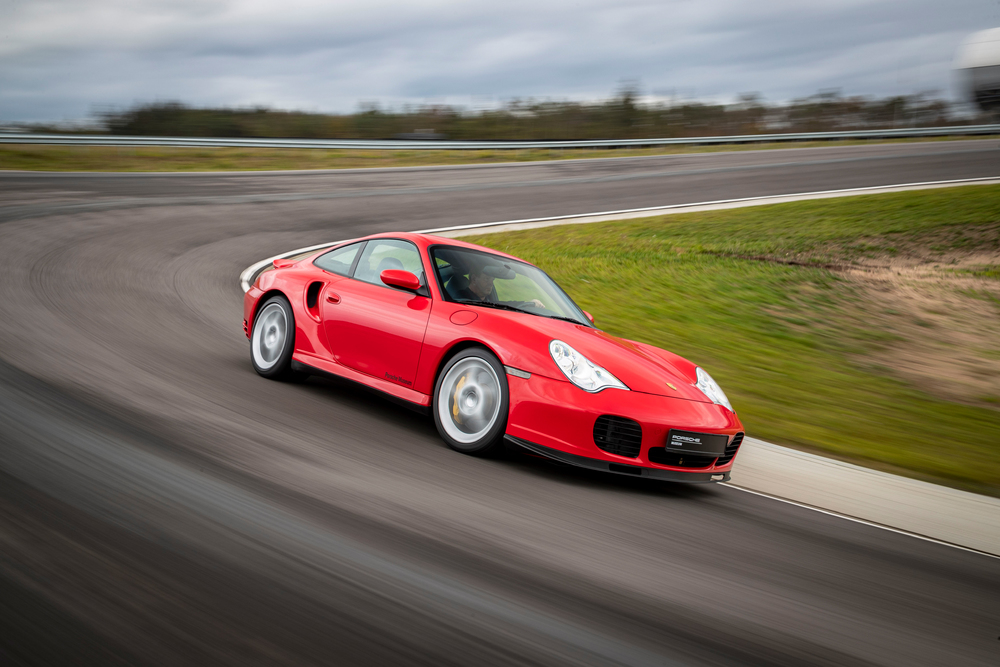
This incarnation of the 911 is much lighter on its brakes than most sports cars of the same vintage, but as with all models the brakes do need to be replaced every few years. Make a visual check of the discs for signs of rust and warping, and also see if the car shakes or pulls one way when stopping – they’re all signs that the brakes will need renewing in the near future.
If the pads and discs have been changed previously, ask to see receipts for the work. It should have been undertaken by a Porsche specialist using high-quality parts.
The suspension in the Porsche 996 was superb for a sports car of its era, and it has proven to be very durable. The only problem you are likely to encounter is some creaking or rattling from the front and rear corners, which is a sign that the control arms are either worn or have been damaged on speed bumps. Replacing them is a simple and relatively inexpensive job, which will probably need to be done every three or four years.
BODYWORK AND INTERIOR
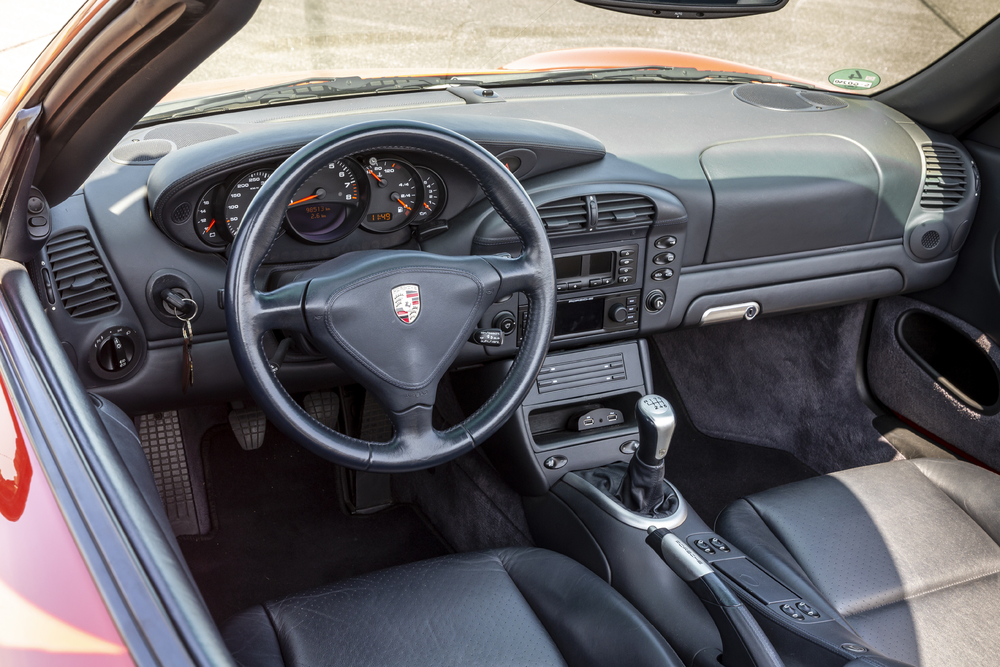
“The bodywork on the Porsche 996 is of the highest quality, and the manufacturer provided a ten-year anti-rust warranty, with most examples still being pretty much perfect after more than twice that long,” says Russell. “With the exception of under the door catches on very early 996s, rust is rare and may be evidence of badly repaired accident damage.”
Check the bodywork carefully for dents and signs of repair, and also inspect underneath the car for a misshapen floorpan – another sure sign it has been involved in a smash.
Look inside the front air intakes for mud and leaves, which will rot out the engine and air-con radiators. You should regularly clean them out.
Corrosion of the exhaust fasteners, bolts and nuts is a common problem that can lead to leakage in the system. A visual check of the underneath of the car will pick this up, but you will need access to a lift to get a proper view. There is no alternative to having the parts replaced.
The infotainment system was out of date a long time ago, and some modern aftermarket ‘upgrades’ can at best look naff, at worst cause considerable hindrance to onward progress. Porsche offers a thoroughly modern sat-nav/Bluetooth audio system that slots right in. It is the best part of £1500, but users rave about it.
The 996 was developed during a particularly tough financial period for the German auto manufacturer, and if there’s one area where you can see evidence of cost cutting it is in the interior, which contains vast swathes of cheap plastics. As such, scratches and scuffs are commonplace, but it should largely all be cosmetic, although squeaks and rattles can become apparent over time.
WHICH TO BUY
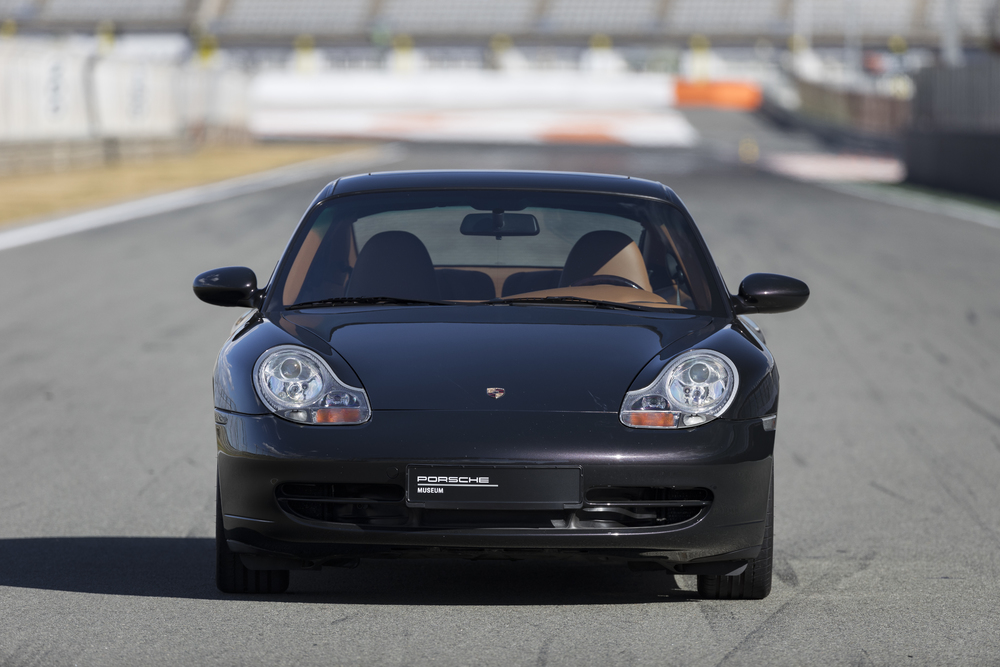
There are two types of ‘standard’ 996: the Carrera 2 and the Carrera 4 (rear- and all-wheel drive respectively), with the choice of wide or narrow body, and coupé, cabrio or Targa bodystyles. They are all great, so the decision around which one to go for is an entirely personal thing. At the top of the tree are the Turbo, GT2 and GT3 special editions, which offer greater performance and are a lot more collectable.
“Buy any Porsche 996 and you will not be disappointed,” explains Russell. “There are very few cars available with this kind of performance that are so easy to use or live with.”
WHAT TO PAY

(2004 996 Carrera 4S Coupé, UK)
Fair: £12,300
Good: £20,200
Excellent: £30,600
Concours: £45,900
(2004 996 Carrera 4S Coupé, US)
Fair: $31,000
Good: $42,500
Excellent: $59,000
Concours: $75,000
SPECIFICATIONS
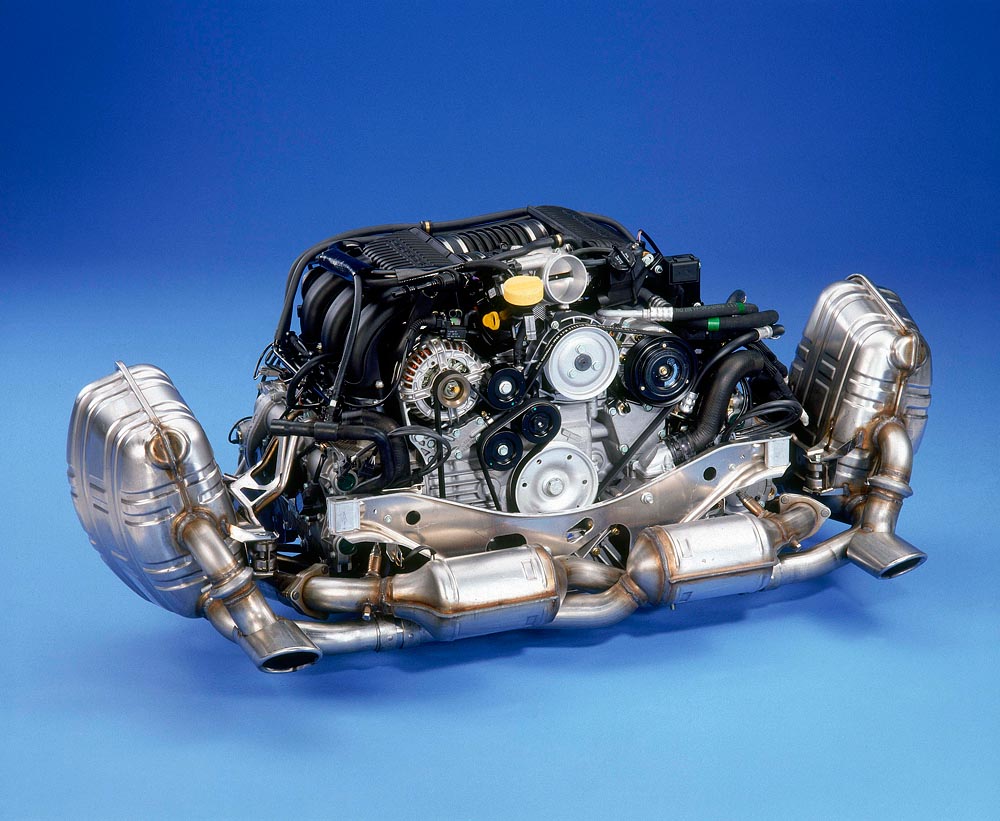
3.4-litre flat-six
Power: 300bhp
Top speed: 155mph
0-60mph: 6.0 seconds
Economy: 29mpg
3.6-litre flat-six
Power: 320bhp
Top speed: 160mph
0-60mph: 5.5 seconds
Economy: 28mpg
